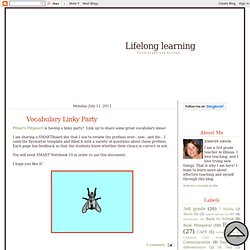

4.2.2 Creating Polygons. Task Make these figures on the geoboard: As many different-sized squares as possibleMany different hexagonsThe polygon with the fewest number of sidesThe polygon with the largest number of sides you can makePolygons with every number of sides between the fewest and the largest [Stand-alone applet] How to Use the Interactive Figure We will refer to the pegs that the rubber band is attached to as nodes.

To attach the rubber band to more than two nodes, drag the rubber band from the middle.To move a rubber band to a new node, click on the current node and drag the rubber band to the desired node.To remove a rubber band from a node, click on the node to select it (a double circle appears), then click on the Delete Node button.To delete a rubber band, click on it to select it, then click the Delete Band button.To clear the geoboard, click on the Clear All button.To color the interior of a shape, click on the rubber band and then click on a color. Learning about Polygons in the Classroom Also see: Reflex. 2nd Grade Number Activities. Educational Games and Resources.
Lifelong learning. I have had a couple of people ask about my reading workshop, so I am going to try to explain it.

I have been doing some sort of this for many years, so I just keep tweaking it to adjust to my changes, my students, and my school's expectations. Every day, my students participate in independent reading, choral reading, partner reading, listening to read-aloud, and writing. Most days, they also participate in a word work activity. While I do kind of use the Daily 5, Students only get to choose when to do independent word work, self-selected reading or independent writing.
I typically designate the time where they will partner read and when they will listen to reading. Currently, I have an hour and a half of interrupted literacy time daily. My hour and a half block looks KIND OF like this: We start with a 5-10 minute time period where we practice reading aloud a poem or quote that I have chosen for the week. Some days our 90 minute block runs over just a little.. but not too much.
The Ruler Game - Learn To Read A Ruler. Functionmachines. Ict games. 2nd Grade. RCPS. Westbrook Math.
RCPS. Fact practice. Illustrativemathematics. ConnectED. Rounding and Estimation. Arrowcards. Khan Academy. Chances-NCES Kids' Zone. Create a Graph Classic-NCES Kids' Zone. Math_Publishers_Criteria_K-8_Summer 2012_FINAL.pdf (application/pdf Object) Www.starrmatica.com/standalone/starrMaticaplaveValueMysteryNumbers.swf. Place Values. The Place Value Game. The Sea Shell Rounding Activity Page. How Did the Months of the Year Get Their Names? Would you believe January was not always the first month of the year?

The ancient Romans used a different calendar system, and their year began in March and ended in February! Even though our modern system may be quite different from the ancient Romans’, they gave us something very important: the months’ names. Let’s take a look at how the ancient Romans chose the names of the 12 months of the year. March: The ancient Romans insisted that all wars cease during the time of celebration between the old and new years.
Since March was the first month of the new year in ancient Rome, some historians believe the Romans named March after Mars, the Roman god of war. April: Three theories exist regarding the origin of April’s name. May: May was named after Maia, an earth goddess of growing plants. June: Apparently, June has always been a popular month for weddings! July: July was named after Julius Caesar in 44 B.C. August: August was named after Augustus Caesar in 8 B.C. Second Grade Math Practice. The University of Arizona - Institute for Mathematics & Education. The Common Core State Standards in mathematics were built on progressions: narrative documents describing the progression of a topic across a number of grade levels, informed both by research on children's cognitive development and by the logical structure of mathematics.
These documents were spliced together and then sliced into grade level standards.